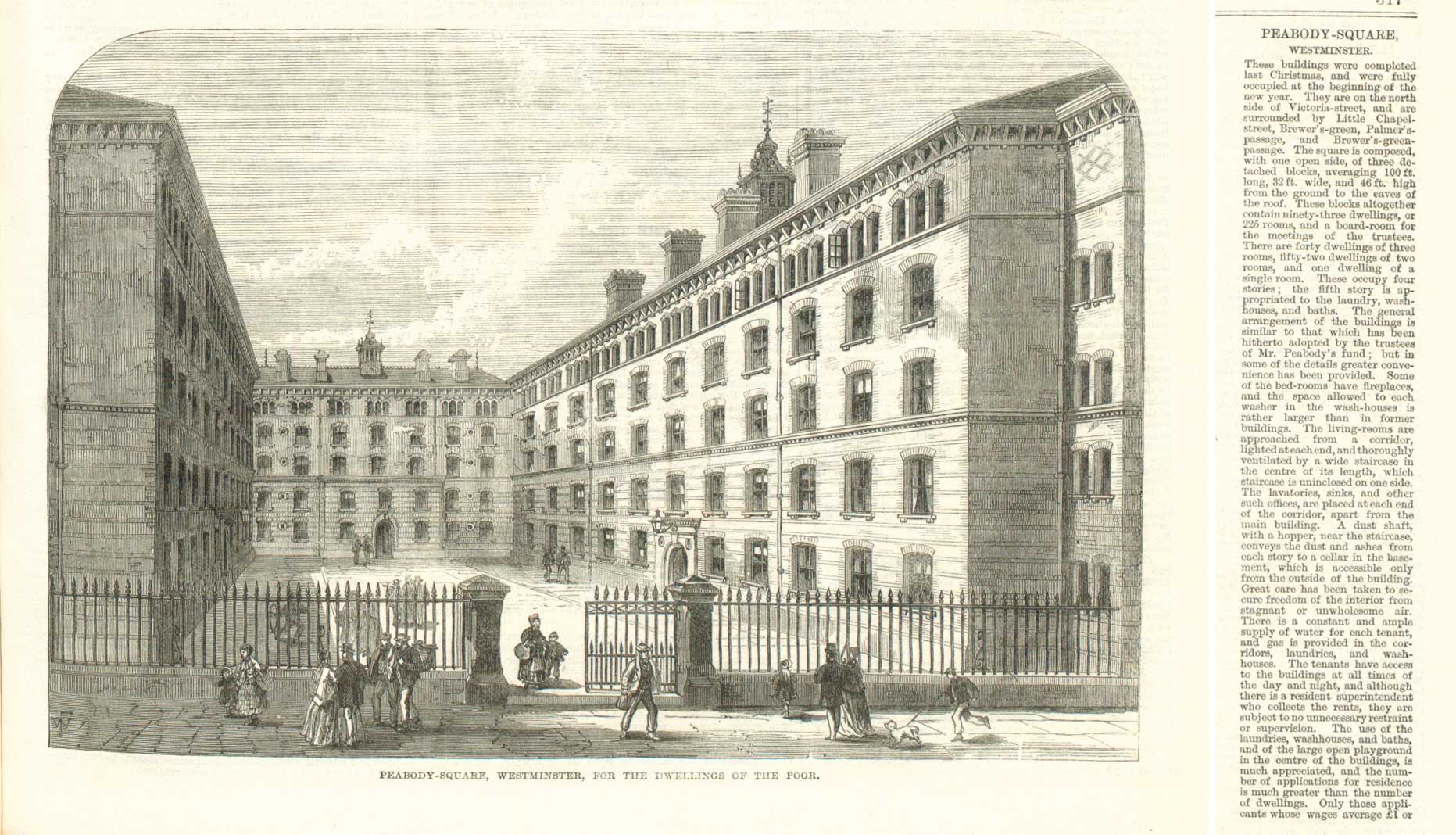
An extract from an article, with an illustration, concerning Peabody housing from the Illustrated London News, 27 March, 1869, Catalogue ref: ZPER 34/54.
George Peabody 1795-1869 was an American business man and philanthropist. He set up the Peabody Donation Fund in 1862 and built the first homes for the labouring poor in Commercial Street in Spitalfields in 1864. This source is an example of further funded buildings in Peabody Square, Westminster. Three blocks housed 93 low-rent flats with separate wash houses, baths and laundries. There was also a playground for children.
Transcript
PEABODY-SQUARE WESTMINSTER
These buildings were completed last Christmas, and were fully occupied at the beginning of the New Year. They are on the north side of Victoria Street, and are surrounded by Little Chapel street, Brewer’s-green, Palmer’s passage, and the Brewer’s-green passage. The square is composed, with one open side, of three detached blocks, averaging 100 square feet long, 32 ft. wide, and 46ft. high from the ground to the eaves of the roof. These blocks altogether contain ninety-three dwellings, or 225 rooms, and a boardroom for the meeting of the trustees. There are forty dwellings of three rooms, fifty-two dwellings of two rooms, and one dwelling of a single room. These occupy four stories, the fifth story is appropriated to the laundry, wash-houses, and baths. The general arrangement of the buildings is similar to that which has been hitherto adopted by the trustees of Mr. Peabody’s fund; but in some of the details greater convenience has been provided. Some of the bedrooms have fireplaces and the space allowed to each washer in the wash-houses is rather larger than in former buildings. The living-rooms are approached from a corridor, lighted at each end, and thoroughly ventilated by a wide central staircase in the centre of its length, which staircase is unenclosed on one side. The lavatories, sinks, and other such offices, are placed at each end of the corridor, apart from the main building. A dust shaft, with a hopper, near the staircase, conveys the dust and ashes from each story to a cellar in the basement, which is accessible only from the outside of the building. Great care has been taken to secure freedom of the interior from stagnant or unwholesome air. There is a constant and ample supply of water for each tenant, and gas is provided in the corridors, laundries and wash-houses. The tenants have access to the buildings at all times of the day and night, and although there is a resident superintendent who collects the rents, they are subject to no unnecessary restraint or supervision. The use of the laundries, washhouses, and baths, and of the large open playground in the centre of the buildings, is much appreciated, and the number of applications for residence is much greater than the number of dwellings
